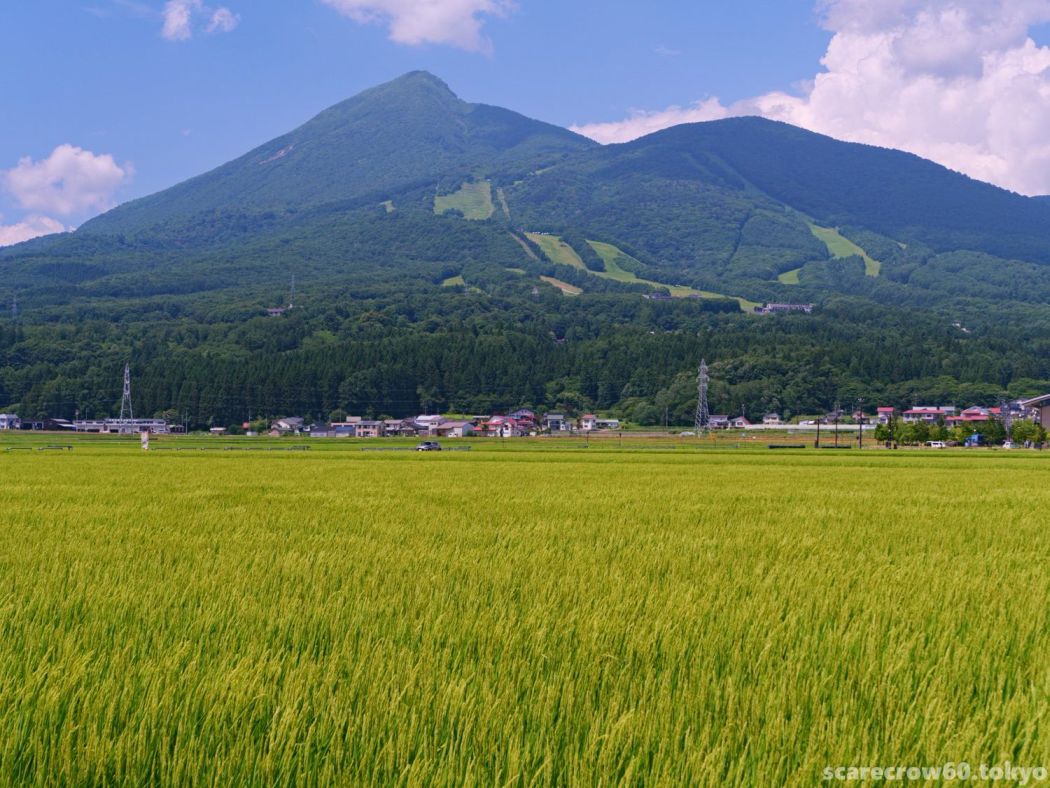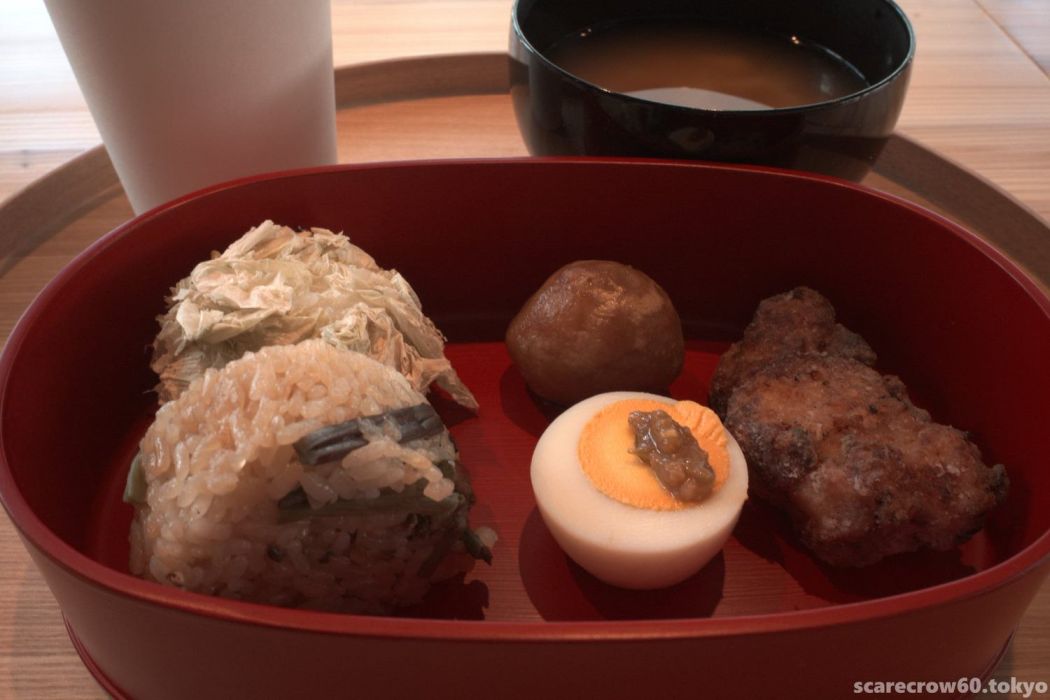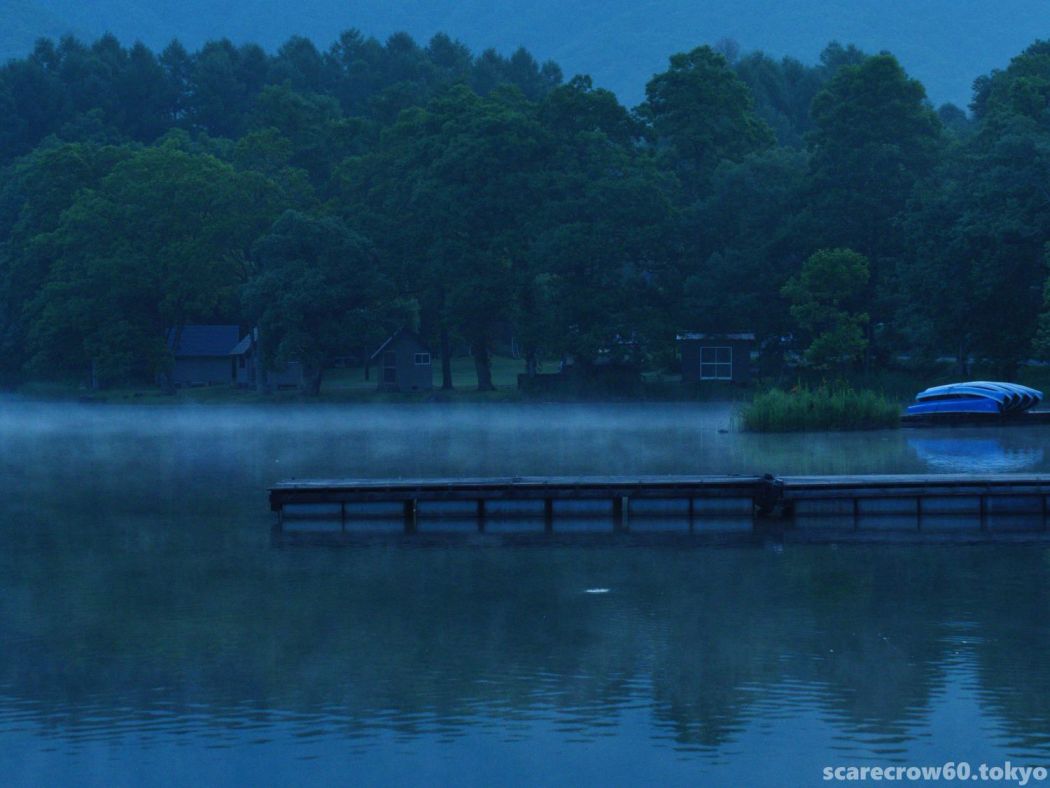Anyway, I wanted to get away from the heat of Tokyo as much as possible, so I took a summer vacation early. The destination was Ura-Bandai, Aizu in Fukushima Prefecture, a regular summer resort for me.
I loaded up a car with my Lumix G99 and three Leica DG series zoom lenses (8-18mm, 12-60mm, and 50-200mm) and headed to Ura-Bandaï for the first time in two years. To get to the cooler highlands as soon as possible, you need to drive 30 minutes north from the Inawashiro-Bandai Highlands IC on the Ban-Etsu Highway, but this time I wanted to stop at some places before that.
I wanted to take this view of the southern foot of Mt. Bandai within Inawashiro town.
Summer scenery of Omote-Bandai with lush rice paddies. It looks exhilarating in the photo, but at this time the temperature in the vicinity was probably over 35 degrees Celsius and it was extremely hot. Even Inawashiro, a lakeside summer resort at an altitude of 500 meters, does not seem to have escaped this year’s heat wave.
The reason why I wanted to take a picture here in such hot weather is that I took this picture at the same place on my way back from Tadami Line trip in May this year.
Here are rice paddies just finished being planted and Mt. Bandai in early summer. These photos were taken with a K-3III, so the aspect ratio is a little different, but when you put them aside, you can feel the change of the seasons, and it’s very atmospheric, isn’t it?
If I were extravagant, I would like to have a golden autumn and a snow-covered winter landscape, but I guess that is not…
In Omote-Bandai, which is extremely hot and humid (although it is a far cry from Tokyo, it is still somewhat refreshing if you are patient), I stopped by one more place. The shrine is located at the foot of the mountain you can see in the photo above, just below the ski resort.
The impressive white Otorii (grand gate) is the Hanitsu Shrine. On its official website, it is introduced as “Aizu guardian god” and “god of children and success in life”.

This is the main shrine. It is a little hidden but there is the Shogun crest of hollyhock on the front…
Around the steps of the precinct stand the edges symbolizing the Aizu Bushido and the Shinsengumi…
Even if I am a light Shinsengumi freak, I was a little surprised by the appearance of the shrine, which looks more like a samurai house than a Shinto shrine.
The shrine is dedicated to Masayuki Hoshina, the first lord of the Aizu domain, as its main deity, and to the successive lords of the domain, so to speak, the Aizu domain itself. The Shinsengumi, who fought hard in Aizu for their lord, Katamori Matsudaira, during the Civil Boshin War, are probably the main reason for the shrine’s popularity.
In front of the main shrine, many wind chimes were swaying, creating a temporary coolness in the heat of the day.
What kind of visitation should I have made? It’s not like R.I.P. because this is lords-gods place, not a graveyard. I prayed for my family’s safety and health as usual, but as I am a fan of the Aizu clan and the Shinsengumi, I would have liked to do something else, but I could not think of anything else.
So, this time, I saw 2 views of Omote-Bandai.



